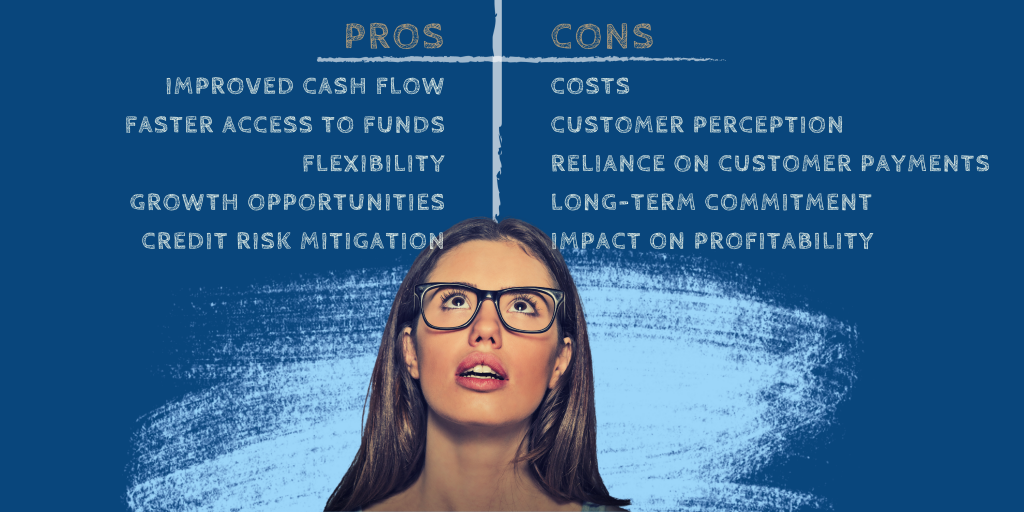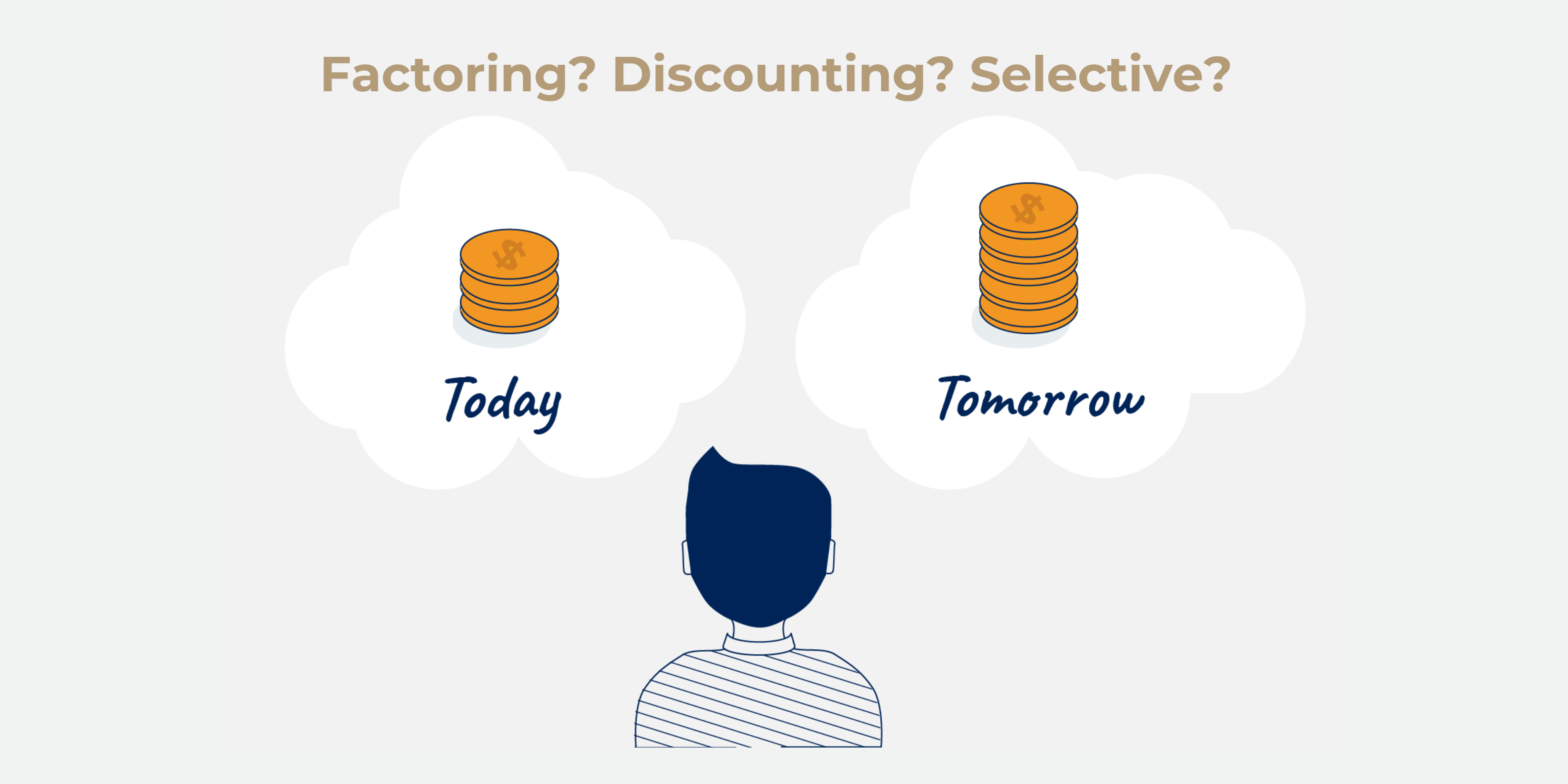the Basics Benefits and Drawbacks of Invoice Finance
Making Informed Decisions
Invoice finance or Invoice factoring provides businesses with valuable opportunities to enhance cash flow and secure immediate working capital. Understanding both its advantages and drawbacks is crucial for informed decision-making. In this chapter, we will explore the benefits and drawbacks of invoice finance. This will enable you to determine if it aligns with your business' financing requirements.

Benefits of Invoice Finance
Improved Cash Flow: One of the primary benefits of invoice finance is the improvement in cash flow. By unlocking the value of accounts receivable, businesses can access immediate cash, which can be used to cover expenses, pay suppliers, invest in growth initiatives, and meet financial obligations promptly.
Improved Cash Flow: One of the primary benefits of invoice finance is the improvement in cash flow. By unlocking the value of accounts receivable, businesses can access immediate cash, which can be used to cover expenses, pay suppliers, invest in growth initiatives, and meet financial obligations promptly.
Faster Access to Funds: .Invoice finance provides businesses with a faster and more efficient way to access funds compared to traditional financing options. Instead of waiting for customers to pay their invoices, businesses can receive an advance on the outstanding invoices, allowing for quicker access to working capital.
Flexibility: Businesses can choose which invoices to finance and when to access funding. This flexibility provides businesses with control over their cash flow and enables them to address immediate financial needs as they arise.
Growth Opportunities: By improving cash flow and providing working capital, invoice finance enables businesses to seize growth opportunities. It allows businesses to invest in expansion, hire additional staff, purchase new equipment, or launch marketing campaigns, ultimately driving business growth.
Mitigation of Credit Risk: In certain arrangements, finance providers assist and advise with credit control and collections, reducing the risk of bad debt and ensuring timely payments from customers. Sometimes trade credit insurance is involved to assist in credit protection and risk management.
Drawbacks of Invoice Finance
Benefits of Invoice Finance
Cost: Invoice finance comes with costs and fees that businesses need to consider. The finance provider charges fees for services such as credit checks, administration, and financing. These costs can vary depending on the provider and the specific terms of the arrangement.
Customer Perception: In some cases, the involvement of a finance provider in the collections process may impact the relationship between the business and its customers. Customers may perceive the financing arrangement as a sign of financial instability or view the involvement of a third party negatively. However, confidential invoice finance options can mitigate this drawback by keeping the financing arrangement confidential.
Reliance on Customer Payments: Invoice finance is dependent on the
timely payment of invoices by customers. If customers delay or default on
payments, it can impact the availability of funds and cash flow for the
business. Businesses should carefully assess the creditworthiness of their
customers and the potential risks associated with their payment behaviours.
Long-Term Commitment: Some invoice finance arrangements may require
businesses to enter into long-term contracts or commit to minimum financing
volumes. This can limit the flexibility of the business in choosing alternative
financing options or adjusting the financing arrangement based on changing
needs.
Potential Impact on Profitability: Invoice finance costs, including fees and interest, should be evaluated to assess overall financial performance as the cost of invoice finance may impact the profitability of the business.

Invoice finance offers significant benefits like improved cash flow, quicker access to funds, flexibility, growth opportunities, and credit risk mitigation. However, businesses must weigh these advantages against potential drawbacks such as costs, customer perception, reliance on customer payments, long-term commitments, and impact on profitability. By thoughtfully considering the pros and cons, businesses can determine if invoice finance aligns with their financial needs and goals.


